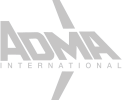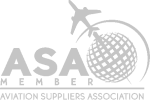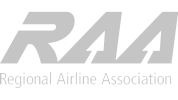As technology advances, aircraft navigation systems become more accurate. Takeoffs, flights, and landings are becoming safer than ever with improved navigation systems, such as WAAS/SBAS. These systems are also quickly becoming more common in the aircraft industry. In fact, most airports are adopting WAAS systems with L-NAV / V-NAV / LPV / LP capable landing approaches.
Even though your old navigation system may still be operating properly, you can still benefit from upgrading to a WAAS-enabled flight management system (FMS). In addition to improved safety, WAAS-enabled FMS are becoming more available than older systems and can save you time and money.
What is WAAS?
Wide Area Augmentation System (WAAS) is an aircraft navigation system developed by the FAA to improve accuracy, integrity, reliability, and availability. It utilizes global positioning satellites and geostationary (earth-orbiting) satellites to improve the GPS navigational service, allowing aircraft to rely on the Satellite-Based Augmentation System (SBAS/GPS) for all phases of flight, including landing approaches. Further, the accuracy for determining the position of your aircraft is within 3-6 feet.
What is LPV?
LPV stands for Localizer Performance with Vertical Guidance. It is becoming the most common landing approach at U.S. airports (see map). This precise landing approach can only be done with a WAAS-enabled system, provided the aircraft is installed with either a dual WAAS/SBAS LPV capable flight management system (FMS) or a single FMS with a standalone LPV monitor.

WAAS-enabled LPV systems are replacing older precision navigation systems, such as Instrument Landing Systems (ILS).
Why Switch to WAAS-enabled SBAS System?
New Systems are More Commonly Available
Aircraft and avionics manufacturers are moving away from older navigation systems in favor of more accurate and safer WAAS-enabled FMS.
As an example, Universal Avionics has already discontinued repair on UNS 1C, 1C+, 1Csp, 1Csp+, 1D, 1D+, 1K, and 1K+ FMS Management Units and discontinued the SCN600 and SCN800 series FMS units. Universal Avionics no longer sells new units for these older models and is only offering limited support for existing systems.
As older systems become obsolete, it will progressively become more difficult to maintain or repair your current FMS.

New Systems Take Priority for Landings
Not all airports are updating and maintaining older ILS landing approach systems. As the map above show, many aircraft are converting to systems that rely on WAAS/SBAS stations. Airports may divert or detour the landings of non-WAAS-enabled aircraft, giving priority to aircraft landings that have a more updated system.
If your aircraft uses an older system, you may not be able to land where you want, when you want. You may find yourself either
- circling the airfield for anywhere from 15 minutes to almost an hour, or
- being advised to land at a different airport that can accommodate older systems.
Switching to a new system means more airports can accommodate you and give priority to your landings. This decreases the potential of being kept in a holding pattern, burning costly fuel, or being sent to another location, causing delays.
New Systems Required for Traveling Overseas
For flying over the Atlantic and Pacific Oceans, you must have a future air navigation system (FANS), such as FANS/CPDLC (controller pilot data link communication). To upgrade to FANS, a WAAS-enabled FMS must be installed on the aircraft.
A Matter of Time
The world of aviation is quickly changing. Manufacturers and airports are turning away from older ILS landing approach systems, making it more difficult to maintain and repair older systems and to potentially use your desired routes. In many ways, it’s only a matter of time before only WAAS-enabled FMS will be accepted.
WAAS-enabled FMS are more accurate and safer than older systems and can save you time and money. Why wait to upgrade your aircraft to a WAAS/SBAS?
Watch: “Support Issues & Solutions for Universal Legacy FMS [webinar]”

















